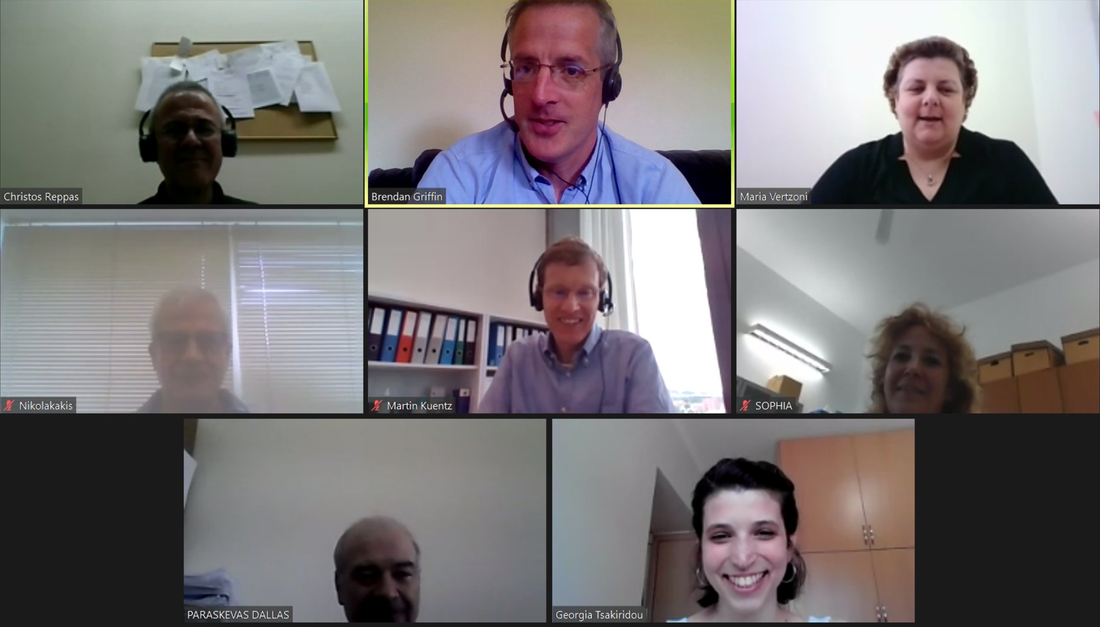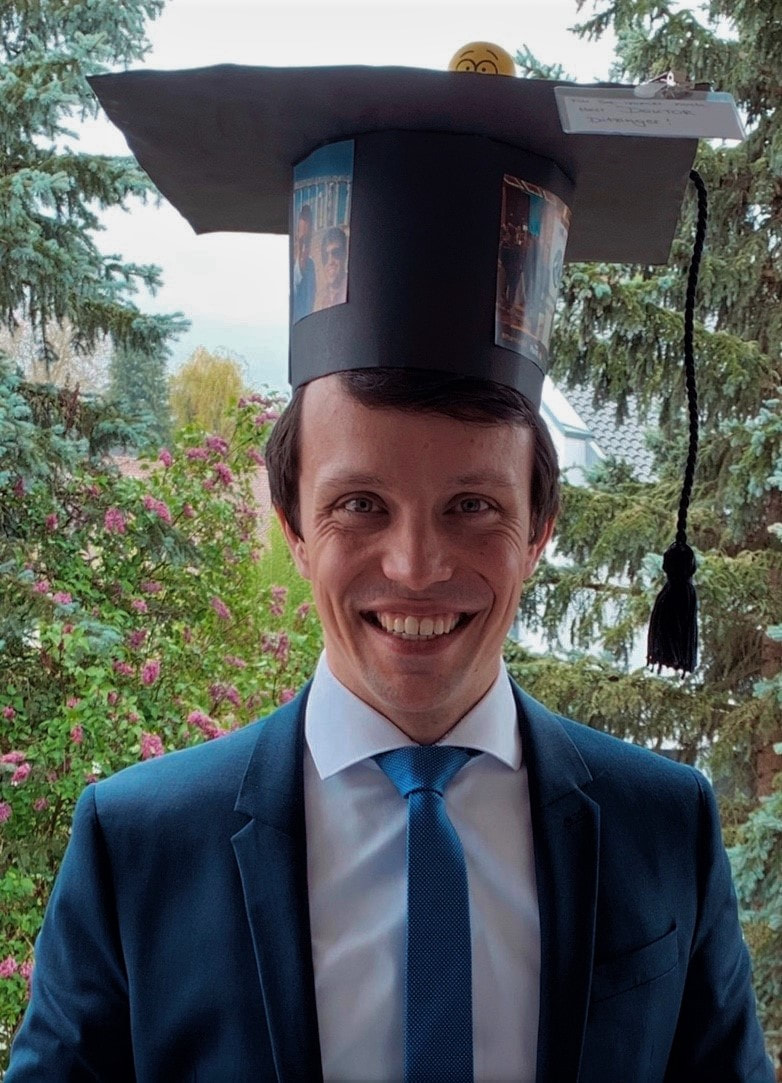Congratulations to Georgia Tsakiridou (ESR4) which after successfully defending her thesis via online meeting, has received her PhD. Find below a short interview with Georgia Tsakiridou about PEARRL and her future goals.
1. What has your research project focused on and what are your key results and innovations coming from your research project?
Nowadays, more and more active pharmaceutical ingredients (APIs) present solubility problems. A common formulation choice for these APIs is the formulation of ASDs, where the API in the amorphous state is dispersed in a polymeric carrier. However, the development of these formulations is often hindered by the possible instability of the amorphous API, that tends to revert to its crystalline state during manufacturing and storage, and by our difficulty in predicting adequately their in vivo behavior. With this work we introduced a workflow that enables the acceleration of the development of ASDs in a step by step manner, using Tacrolimus as a model API. First we introduced a novel rheology based method to the field of ASDs which enables the selection of appropriate polymers for the preparation of stable and successful ASDs, by connecting the viscosity of the API-polymer solutions to the miscibility of API and polymer, as it has been reported that API-polymer miscibility is crucial for ASD stability. The polymers deemed most appropriate were used in order to prepare tacrolimus ASDs via the Spray drying method in a design of experiment approach. Stability experiments showed that amorphous tacrolimus remained stable even 6 months after preparation, further verifying the importance of the rheology-based method. On the second front of predicting the in vivo behavior of ASDs we investigated the usefulness of the apparatus IV, using biorelevant media that mimic the conditions in the gastrointestinal lumen, in predicting the in vivo performance of 2 commercial tacrolimus formulations and one test formulation prepared based on the output of the rheology based method. It was revealed that the dissolution data from the apparatus IV showed a good predictive ability for the initial exposure of these formulations in vivo, which underlines the need to move towards more biorelevant set-ups and apparatuses that better mimic the physiological conditions in order to better capture the in vivo performance of ASDs.
2. What impact does your research project and your outcomes have (in your field of research, in drug development, any benefits for the general public etc.)?
ASDs are a very important part of drug development, as a formulation choice, because they provide many advantages. However, their commercial use is not as pronounced as it could be due to the bottlenecks in their development. In my opinion, this work provided a systemic way of dealing with these bottlenecks from early formulation choices to the in vivo performance of ASDs. Undoubtedly, this work shows many limitations but it could provide a framework for the potential acceleration of ASDs development, especially for APIs with similar characteristics to tacrolimus.
3. What were your personal highlights over the course of your research project (training, results, awards, networking etc.)?
It is definitely a combination of all those but I also distinguish the effect of the “PEARRL people” in this experience. It was a great opportunity to be able to converse with leaders in the field of pharmaceutics, who approached each of us with a truly inspiring love for teaching and science. It was also a wonderful experience to meet and collaborate with the other ESRs of the PEARRL network which was a great learning environment.
4. Are there any elements of the training you received that you find should be integrated in local doctoral programmes?
The importance of Physiologically based pharmacokinetic (PBPK) modelling is constantly being proven in the field of Pharmaceutics. Consequently, the fact that the PEARRL network gave me the opportunity to attend related workshops and familiarize with the topic was a great training experience that I believe would benefit other PhD candidates. Moreover, another great learning experience was the three months I spend in the Greek regulatory agency for medicines, as it provided an inside view of the work being done in the regulatory agencies, which is another aspect of the drug development process.
5. How did the PEARRL network impact your doctoral experience?
The fact that I was a member of the PEARRL network greatly affected my doctoral experience, as the sense of a team was very prominent from the beginning, not only due to the collaboration opportunities and monthly virtual meetings and annual conferences, but also due to the sense of moving towards the common goal of providing better medicine in a safer manner to the public. Moreover, another thing that greatly impacted my experience was the mobility that was introduced in the PEARRL program that allowed me to experience different working environments in academia, industry and the regulatory sector.
6. What are your plans for the future?
My future plans include working in the pharmaceutical sector at Pharmathen S/A in the department of Clinical Operations, where I can apply many skills acquired during my PhD, potentially including PBPK modelling. Moreover, my future plans, also, include raising a family.
Nowadays, more and more active pharmaceutical ingredients (APIs) present solubility problems. A common formulation choice for these APIs is the formulation of ASDs, where the API in the amorphous state is dispersed in a polymeric carrier. However, the development of these formulations is often hindered by the possible instability of the amorphous API, that tends to revert to its crystalline state during manufacturing and storage, and by our difficulty in predicting adequately their in vivo behavior. With this work we introduced a workflow that enables the acceleration of the development of ASDs in a step by step manner, using Tacrolimus as a model API. First we introduced a novel rheology based method to the field of ASDs which enables the selection of appropriate polymers for the preparation of stable and successful ASDs, by connecting the viscosity of the API-polymer solutions to the miscibility of API and polymer, as it has been reported that API-polymer miscibility is crucial for ASD stability. The polymers deemed most appropriate were used in order to prepare tacrolimus ASDs via the Spray drying method in a design of experiment approach. Stability experiments showed that amorphous tacrolimus remained stable even 6 months after preparation, further verifying the importance of the rheology-based method. On the second front of predicting the in vivo behavior of ASDs we investigated the usefulness of the apparatus IV, using biorelevant media that mimic the conditions in the gastrointestinal lumen, in predicting the in vivo performance of 2 commercial tacrolimus formulations and one test formulation prepared based on the output of the rheology based method. It was revealed that the dissolution data from the apparatus IV showed a good predictive ability for the initial exposure of these formulations in vivo, which underlines the need to move towards more biorelevant set-ups and apparatuses that better mimic the physiological conditions in order to better capture the in vivo performance of ASDs.
2. What impact does your research project and your outcomes have (in your field of research, in drug development, any benefits for the general public etc.)?
ASDs are a very important part of drug development, as a formulation choice, because they provide many advantages. However, their commercial use is not as pronounced as it could be due to the bottlenecks in their development. In my opinion, this work provided a systemic way of dealing with these bottlenecks from early formulation choices to the in vivo performance of ASDs. Undoubtedly, this work shows many limitations but it could provide a framework for the potential acceleration of ASDs development, especially for APIs with similar characteristics to tacrolimus.
3. What were your personal highlights over the course of your research project (training, results, awards, networking etc.)?
It is definitely a combination of all those but I also distinguish the effect of the “PEARRL people” in this experience. It was a great opportunity to be able to converse with leaders in the field of pharmaceutics, who approached each of us with a truly inspiring love for teaching and science. It was also a wonderful experience to meet and collaborate with the other ESRs of the PEARRL network which was a great learning environment.
4. Are there any elements of the training you received that you find should be integrated in local doctoral programmes?
The importance of Physiologically based pharmacokinetic (PBPK) modelling is constantly being proven in the field of Pharmaceutics. Consequently, the fact that the PEARRL network gave me the opportunity to attend related workshops and familiarize with the topic was a great training experience that I believe would benefit other PhD candidates. Moreover, another great learning experience was the three months I spend in the Greek regulatory agency for medicines, as it provided an inside view of the work being done in the regulatory agencies, which is another aspect of the drug development process.
5. How did the PEARRL network impact your doctoral experience?
The fact that I was a member of the PEARRL network greatly affected my doctoral experience, as the sense of a team was very prominent from the beginning, not only due to the collaboration opportunities and monthly virtual meetings and annual conferences, but also due to the sense of moving towards the common goal of providing better medicine in a safer manner to the public. Moreover, another thing that greatly impacted my experience was the mobility that was introduced in the PEARRL program that allowed me to experience different working environments in academia, industry and the regulatory sector.
6. What are your plans for the future?
My future plans include working in the pharmaceutical sector at Pharmathen S/A in the department of Clinical Operations, where I can apply many skills acquired during my PhD, potentially including PBPK modelling. Moreover, my future plans, also, include raising a family.



 RSS Feed
RSS Feed
